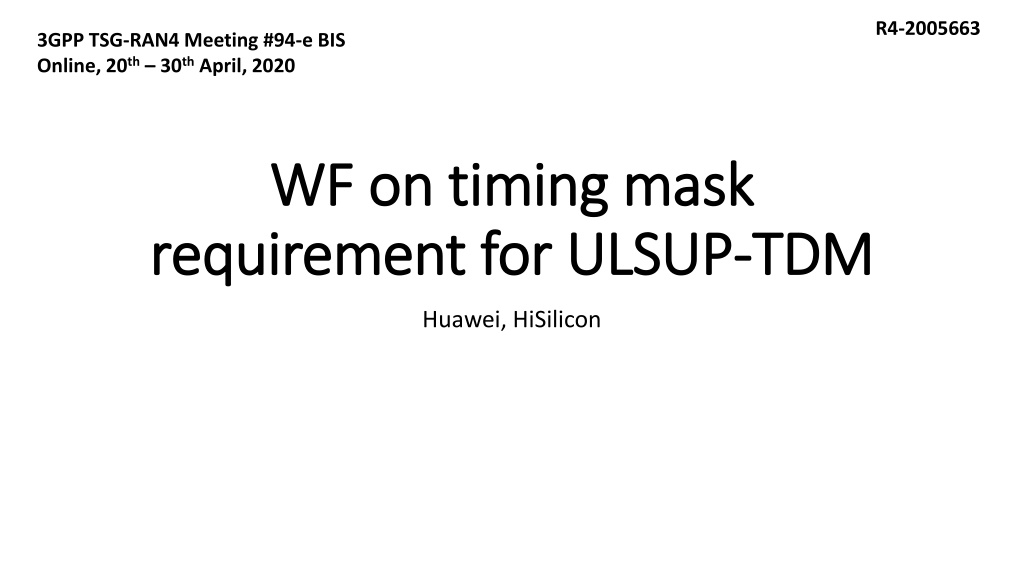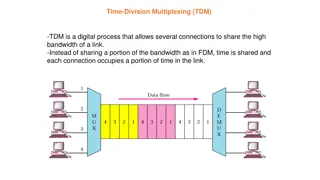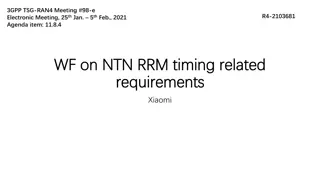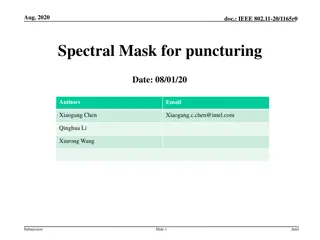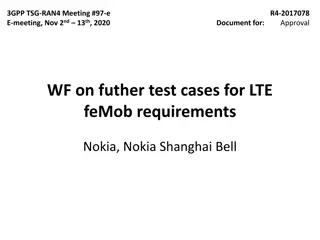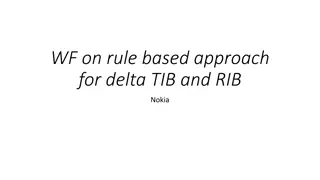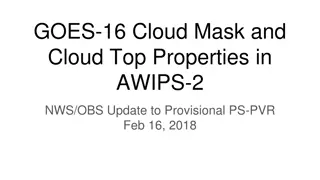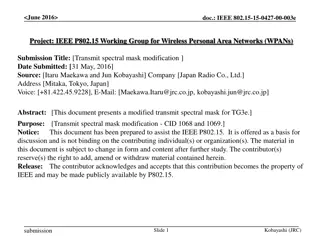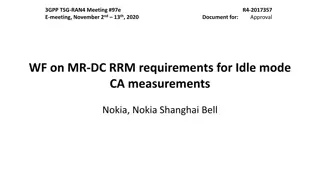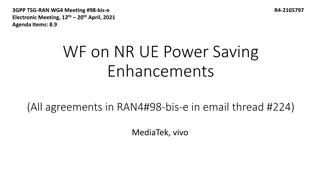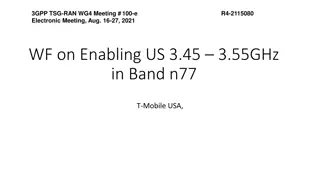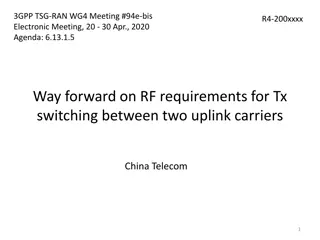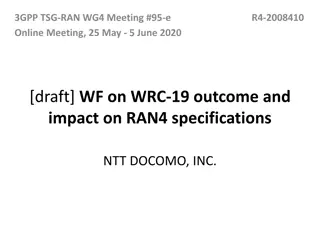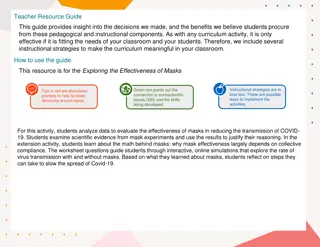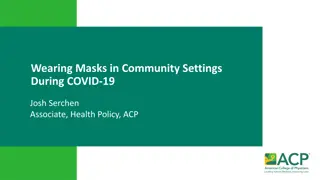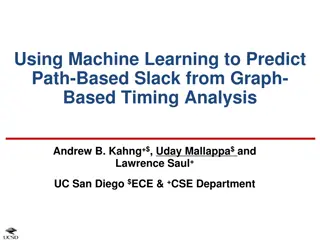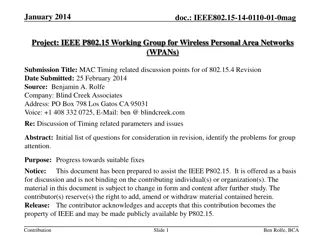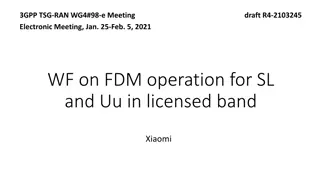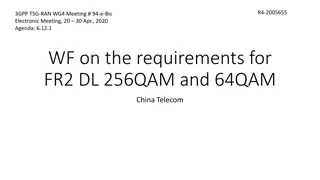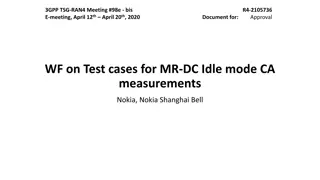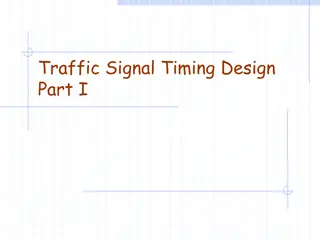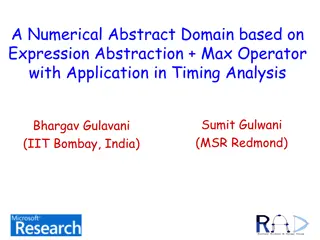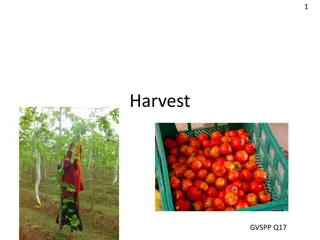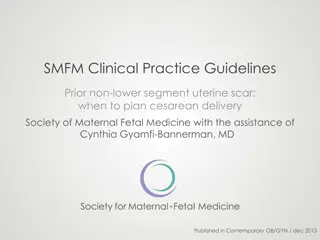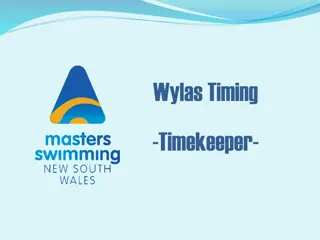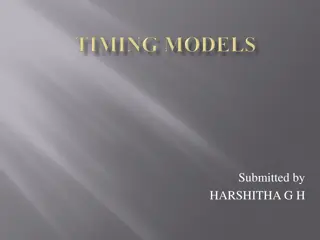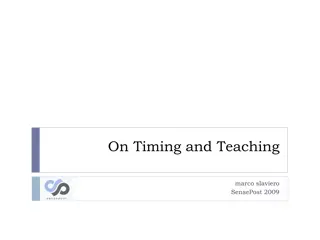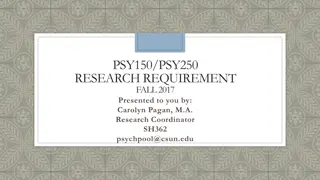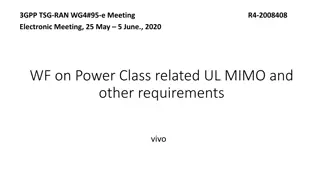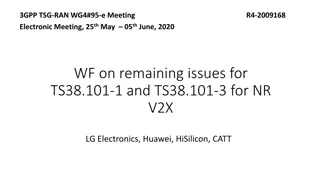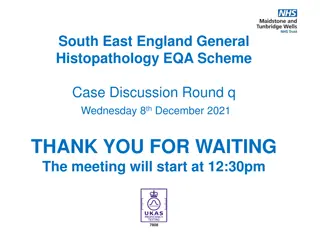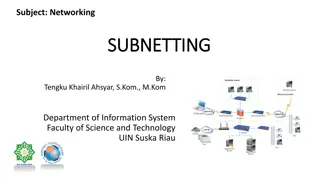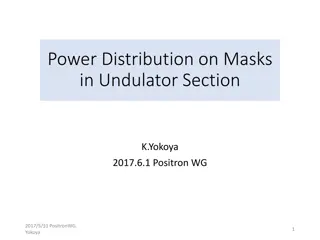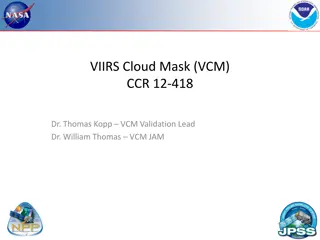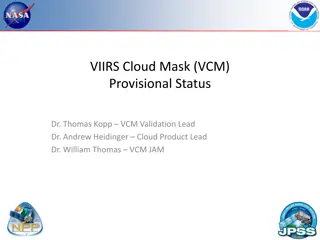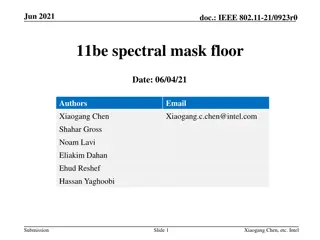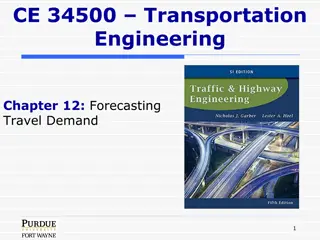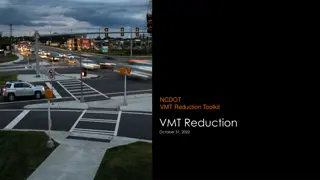Discussion on Timing Mask Requirement for ULSUP-TDM in RAN4#94e Meeting
In the RAN4#94e and #94e-Bis meetings, discussions were held on the timing mask requirement for ULSUP-TDM, particularly focusing on sub-topics like evaluating uplink timing differences between LTE and NR, clarifying present time mask conditions, and testing time mask requirements. The key issue centered on whether the uplink timing difference up to BS TAE+Tae should be considered for ULSUP-TDM. Simulations and evaluations were proposed to address these questions, aiming to analyze the impact on demodulation performance of LTE and NR users in different frequency domains.
Download Presentation

Please find below an Image/Link to download the presentation.
The content on the website is provided AS IS for your information and personal use only. It may not be sold, licensed, or shared on other websites without obtaining consent from the author. Download presentation by click this link. If you encounter any issues during the download, it is possible that the publisher has removed the file from their server.
E N D
Presentation Transcript
R4-2005663 3GPP TSG-RAN4 Meeting #94-e BIS Online, 20th 30thApril, 2020 WF on timing mask WF on timing mask requirement for ULSUP requirement for ULSUP- -TDM TDM Huawei, HiSilicon
Background In RAN4#94e and #94e-Bis meetings, the following questions for timing mask requirement for ULSUP-TDM were discussed: Sub-topic 5-1: Should the uplink timing difference between LTE and NR up to BS TAE+Tae be considered for ULSUP-TDM? Q1: In order to address the original question for sub-Topic 5-1, i.e., should the uplink timing difference between LTE and NR up to BS TAE+Tae be considered for ULSUP-TDM, more evaluation including simulation seems be needed. Then if needed, what is the assumption for simulation or evaluation? Q2: Is the condition under which the present time masks apply clear, or should the clarification on the condition be needed? Q3: If the agreed answer to Q1is yes, how should the condition be clarified? Sub-topic 5-2: How to capture the impact of uplink timing difference on the core specifications for ULSUP-TDM? Q1: Should the discussion be postponed due to RAN2 on-going discussion on the applicability of the capability ul-SharingEUTRA-NR (related to ULSUP-TDM) for variable duplex bands? Q2: Is there any UE behavior which needs RAN1 feedback? Sub-topic 5-3: Whether and how to test the time mask Way forward
Way forward The key issue is sub-topic 5-1. In order to address this issue, it is proposed to provide the simulations to do the evaluation for Q1 and Q2 in sub-topic 5-1 Run link level simulation to evaluate the impact of uplink timing difference on the BS demodulation performance Assume one LTE user and one NR user adjacent to each other in frequency domain in the same uplink time slot with the following parameters: Follow the assumptions in Section 8.2.5 of TS38.104 ( which is NR requirements for UL timing adjustment) except for Propagation condition: Replace propagation condition for each user by TDLC300-100 Low, 1x2 Uplink timing difference at the BS receiver between LTE and NR users: 5us, 3us, 2us, 1us, 0us MCS-s: LTE (16QAM, coding rate: 3/4, 25PRB, TM1), NR G-FR1-A4-8 (16QAM, coding rate: 658/1024, 25PRB, 15KHz SCS) LTE (64QAM, coding rate: 5/6, 25PRB, TM1), NR G-FR1-A5-8 (64QAM, coding rate: 567/1024, 25PRB, 15KHz SCS) LTE (256QAM, coding rate: 5/6, 25PRB, TM1), NR (256QAM, coding rate: 841/1024, 25PRB, 15KHz SCS) BS receiver: single FFT as baseline Provide the simulation results for both LTE and NR users assuming that BS receive both at the same time
Way forward Topic 5-1: Should the uplink timing difference between LTE and NR up to BS TAE+Tae be considered for ULSUP-TDM? In order to address issue 5-1, the following questions need be answered Q1: In order to address the original question for sub-Topic 5-1, i.e., should the uplink timing difference between LTE and NR up to BS TAE+Tae be considered for ULSUP-TDM, more evaluation including simulation seems be needed. Then if needed, what is the assumption for simulation or evaluation? Q2: Is the condition under which the present time masks apply clear, or should the clarification on the condition be needed? Q3: If the agreed answer to Q1is yes, how should the condition be clarified? It is proposed to provide the simulations to do the evaluation for Q1 and Q2 Run link level simulation to evaluate the impact of uplink timing difference on the BS demodulation performance Assume one LTE user and one NR user adjacent to each other in frequency domain in the same uplink time slot with the following parameters: Follow the assumptions in Section 8.2.5 of TS38.104 ( which is NR requirements for UL timing adjustment) except for Propagation condition: Replace propagation condition for each user by TDLC300-100 Low, 1x2 Uplink timing difference at the BS receiver between LTE and NR users: 5us, 3us, 2us, 1us, 0us MCS-s: LTE (16QAM, coding rate: 3/4, 25PRB, TM1), NR G-FR1-A4-8 (16QAM, coding rate: 658/1024, 25PRB, 15KHz SCS) LTE (64QAM, coding rate: 5/6, 25PRB, TM1), NR G-FR1-A5-8 (64QAM, coding rate: 567/1024, 25PRB, 15KHz SCS) LTE (256QAM, coding rate: 5/6, 25PRB, TM1), NR (256QAM, coding rate: 841/1024, 25PRB, 15KHz SCS) BS receiver: single FFT as baseline Provide the simulation results for both LTE and NR users assuming that BS receive both at the same time
